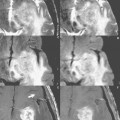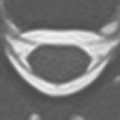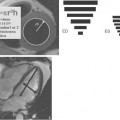50 Image Composing
Image composing represents a postprocessing application that allows for combination of coherent MRI data sets acquired at different times and displaying different parts of an anatomic system. Because of a limited field of view (FOV), it is not always feasible to display an entire anatomic system, for example the whole spine, with one sequence acquisition. However, technological advances have made it possible today to perform whole body MR imaging within a reasonable scan time. This opens the door to new diagnostic fields, such as screening for metastases with whole body short tau inversion recovery (STIR) and whole body contrast-enhanced magnetic resonance angiography (MRA). In addition, imaging of the whole spine is feasible, with high-resolution cervical, thoracic, and lumbar scans all acquired in a single setting.
These imaging approaches share in common the consecutive acquisition of multiple exams or segments to achieve coverage for the extended anatomic region to be evaluated. A requirement for efficient workflow is the presence of coils or a matrix of coils covering the entire region to be evaluated, in essence in most cases the entire body. In a second step, with modern software, the acquired data can be composed to a single data set to enhance image evaluation/diagnostic interpretation.
Stay updated, free articles. Join our Telegram channel

Full access? Get Clinical Tree








